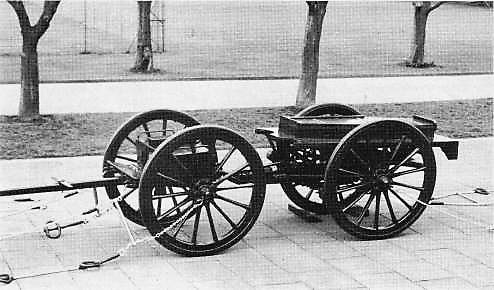- Author
- NHSA Webmaster
- Subjects
- History - general, Occasional papers
- Tags
-
- RAN Ships
- None noted.
- Publication
- March 1981 edition of the Naval Historical Review (all rights reserved)
By Harry Adlam
While watching the television coverage of the funeral of the late Lord Louis Mountbatten of Burma a question arose in my mind. Why were the men of the Royal Navy pulling what was obviously a military field gun? The Royal Navy has its own QF 12 pounder 8 cwt field gun that is normally pulled by a team of l8 men, but with the State Funeral Gun Carriage a team of about eighty men were seen to be pulling the gun, with a brake party of about half that number. Why an army gun and not a naval gun? There was no doubt at all that the gun had been a horse drawn field piece, either a 12 or 15 pounder BL, as the Sydenham spade and spring case were quite visible. WHY?

I contacted the late Captain Frank Adlam, MBE, who was in all probability the greatest gunnery historian Australia has ever known. His comments were quite definite. “The navy took the gun off the army at the funeral of Queen Victoria, because the army were making such a mess of it.” Probably true, but not the full story, but it did appear that the incident must have been quite embarrassing for the soldiers.
Donald Walker, the President of the United Services Institution in Colac, Victoria, and a member of the Naval Historical Society, had been a staff instructor at the Mecca of naval gunnery, Whale Island, in 1939. He supplied a very good account of the fiasco at the funeral of Queen Victoria, recording that the artillery gun horses played up and that the situation was resolved by the naval street lining company who took over and towed the gun with man draught. From Don’s account it certainly would appear that the incident was one which the army would prefer to forget.
To fill in the gaps in the story I then wrote to the Commanding Officer of HMS Excellent, which establishment is the custodian of the gun in question. From Commander J. Mankerty, Royal Navy, I received not one but two reports of the incident which started the tradition of the Royal Navy using the military field gun at state funerals.
The designation of this piece was Ordnance, BL, 12 pdr 6 cwt, MK II, as made by Vickers Sons and Maxim in 1896, but was stored at the Royal Arsenal, Woolwich on completion. It was never issued as a service weapon, and was probably part of the army’s equipment reserve. In 1899 No. 146 was turned over to the Royal Carriage Department, Woolwich, for conversion to a State Funeral Gun Carriage. This conversion entailed the fitting of a cataflaque above the piece, but the normal fittings such as the hand spike, spade, spring case, etc.,were left in place.The gun was issued to X Battery, Royal Horse Artillery in January 1901 to be used in the final phase of the funeral of Queen Victoria. This was the move from the railway station at Windsor to the last resting place at Windsor Castle.
The date was the 2nd February 1901, a bitterly cold day with light snow falling, quite windy and with the usual shade of United Kingdom February grey.
The naval account of the proceedings is based on a report given by Lieutenant P.B. Noble, RN, who was later to become Admiral Sir Percy Noble. From Sir Percy’s report it seems that a company of about 100 men had been provided by the Royal Navy for street lining duties at Windsor Station. Despite the cold weather, the sailors would not wear their overcoats, and braved the elements in their No.1’s. The main trouble began by the late arrival of the funeral train, and by the time it did appear the troops had been waiting in the bleak conditions for one and a half hours. The mounted troops had given their horses some gentle circling movements to keep them happy, but the four horse team from X Battery, RHA, stood patiently in their traces for the whole period with no exercise at all. This appears to have been the cause of the whole debacle. If the traces had been cast off and the horses taken for a short walk occasionally things probably would not have turned out as they did.
The funeral train duly arrived and reverently the casket was carried from the train and placed on the gun carriage. The naval contingent were in the traditional position of resting on reversed arms. The ceremony was being conducted with dignified decorum. The order to advance was given, and then all hell broke loose. The wheel horses had been too long in the cold without exercise, and they let their feelings be known. They reared up and pranced about, but not moving forward at all. The lead horses followed suit, and it looked as though the coffin would be toppled off the gun. At this point Prince Louis of Battenburg moved over to the naval guard commander, Lieutenant the Honourable Algernon Boyle and told him to “Ground Arms and stand by to drag the gun carriage”. The order was carried out without any fuss and the party marched in fours to the head of the gun team. The horses were unharnessed and moved out of the way. Working with commendable speed the sailors soon had drag ropes extemporised from the traces, and by taking the communication cords from the train soon had the gun ready to move. The whole incident took about five minutes. With the drag ropes in position the men took up their stations and the order to “Slow March” was given. The cortage was under way at last.




